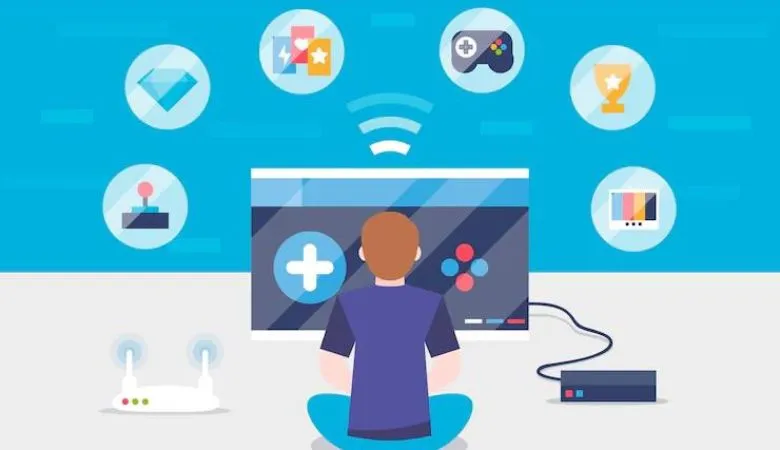The subscription economy has become a revolutionary feature in the entertainment industry. From platforms such as Netflix and Amazon Prime to subscription-based gaming models such as Xbox Game Pass and PlayStation Plus, it has changed how people consume media.
The subscription economy has been a major revolution in the world of gaming. With this system, not only has a wide library of games become accessible to gamers, but they are also enjoying multiple games at lower prices. Plus, without high upfront costs, gamers can out a variety of games.
How Has Access to Games Evolved?
Over time, accessibility to games has gone through several changes. Starting from Atari cartridges to Steam Digital Downloads, how you own games has changed significantly.
The biggest change can be explored by first looking at the traditional model, where you used to own the game that you bought. And then looking at the subscription economy-based model, where you are gaining access to an entire library.
A subscription economy would be like- if your rummy app allows you to play all variants of the game for a monthly recurring fee.
Traditional Model
What is referred to as the traditional model here is the simplest and the most common way in which people gain access to games. You pay for a game; you get to play it. Whether it’s physical copies, such as cartridges or discs, or digital copies, you gain access to the game with a one-time purchase.
Here, at one time, you are paying the full price for a game and gaining complete access to it. Platforms such as Steam or the PlayStation Store or GameStop are notable examples of the traditional model of game access.
Rise of the Subscription Model
With time, the traditional model of access to games became more challenging to afford. As the prices of games arose, more people sought for a different way in which they could still play their favorite games, without needing to choose only one or two that they could actually afford.
This led to the rise of the subscription model of access to games. Via the subscription model, instead of owning a game at a full one-time price, you pay annual or monthly subscription rates, which gives you access to a rotating library of games.
In the case of Xbox Game Pass, the most notable name in the subscription-based model of gaming, there is a list of games that you gain access to when you purchase the game pass. So, with a recurring monthly payment, you can play multiple games. The following month, new releases might be added to the list, implying that you are getting to play multiple games without needing to pay the full one-time price for each separately.
Other examples of this model of access to games are PlayStation Plus and Apple Arcade.
Here’s a table for comparison between the two models:
| Feature | Traditional Model | Subscription Model |
| Payment | One-time | Recurring |
| Ownership | Yes | Only access |
| Access Variety | Only the game you bought | Various games |
| Discoverability | Choice-dependent | Curated lists |
What Key Benefits do Players Receive?
There are several benefits to gamers in the subscription-based model of game access. The most common benefit is the aspect of lowered expenditure. Modern games are quite expensive. So, when the subscription-based system allows you access to a collection of games at lower and recurring expenditures, it is a clear advantage over a large one-time expenditure.
With a subscription-based system, when you are given the keys to multiple games, you would often want to experiment with games that you would not usually try out. So, you can experience a plethora of game genres without needing to go out of your way to purchase a game you wouldn’t usually play.
Plus, with cloud sharing services, you can carry your progress in a game over from device to another. For example, you can play rummy on your new phone right where you left off on your previous phone, due to cloud sharing.
What are the Impacts on Developers & Publishers?
Game developers and publishers are significantly impacted by the adoption of the subscription model of access to games. However, these impacts can be either positive or negative, depending on the category you are judging by.

Pros
The subscription system creates a new revenue stream for the publishers as they can generate revenue based on the subscription payments.
With games being included in the subscription package, many indie developers may find their games receiving additional discoverability, compared to how much attention they would receive in the traditional format.
Also, game development is impacted by this change in accessibility. With limited availability of some games on the Game Pass, developers are focusing more on shorter and indulge game formats. This helps games receive the attention, and higher completion rates within limited windows.
Challenges
With the subscription system, more game developers and publishers are focusing on increasing visibility. The increased requirement of attention may cause many developers to push in a plethora of content within a limited time for completion.
That impacts gaming experience with convoluted gameplay mechanics with a lack of innovation. Some developers are even taking less risks to make their games more marketable over a small time period.
Moreover, as gamers receive access to multiple games at a time, the perceived value of a game developed by a relatively unknown studio decreases as it can come in the same package with a more notable title.
How has the Subscription Economy Changed Player Behavior?
The subscription system has effectively changed how players perceive games nowadays. Since gamers are just gaining access to a temporary playing license with the subscription system, they believe that they have lost the right to own the game they play.
Gamers are also losing interest in playing games where they would explore a well-developed world, taking their time to explore and find new things. Rather, they want to accomplish more completion over a shorter period.
Gamer loyalty has also been impacted by this. As they do not own a game, they take more of a sampling approach, trying out various games, rather than being invested in one game or one development studio.
What are the Risks of This Game Ownership System?
The subscription system has some major risks involved. The first is the fact that developers might see their game being removed from the subscription platform’s library, without prior notice. Again, small and indie developers are more at risk of this compared to bigger names such as Bethesda, Ubisoft, or Activision.
On the other hand, from the perspective of the gamers, subscription fatigue might set in. What if you have the regular tier of subscription, but the game you want to play is on a higher tier? This then increases the cumulative costs of subscription.
Final Thoughts
Subscription systems have changed how game ownership is perceived, by the way that in such systems, games are not owned, but rather only in limited access to gamers. However, such a system has also led to more games receiving deserved attention, and smaller developers are receiving player engagement.
Thus, the subscription economy has impacted gaming in a major way, be it positively or negatively.
